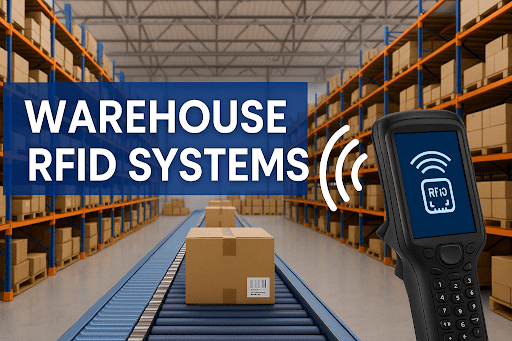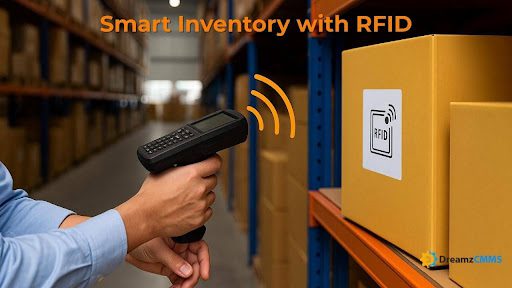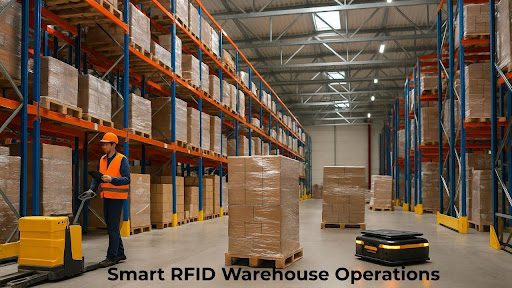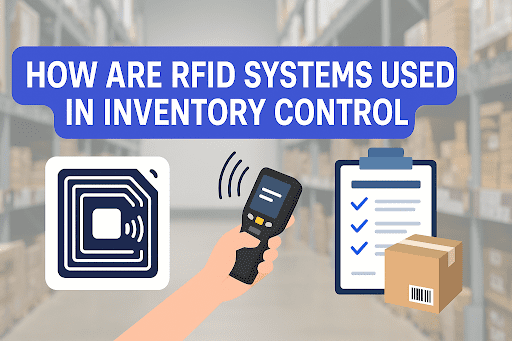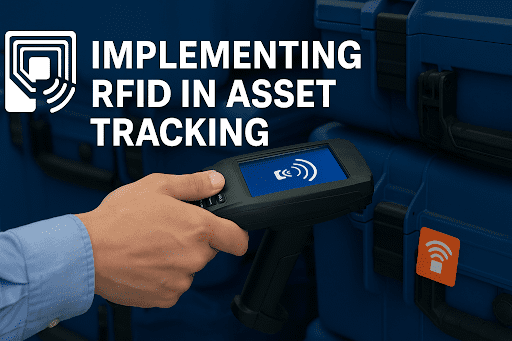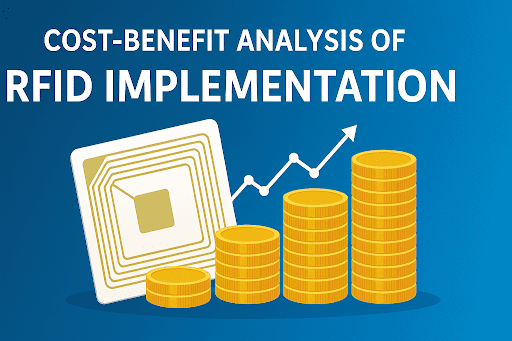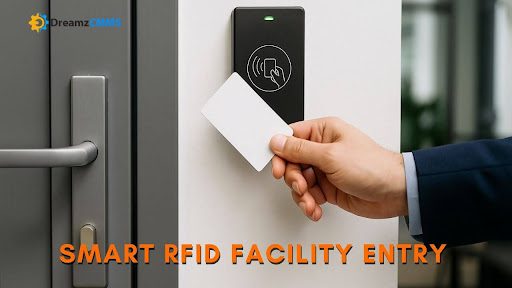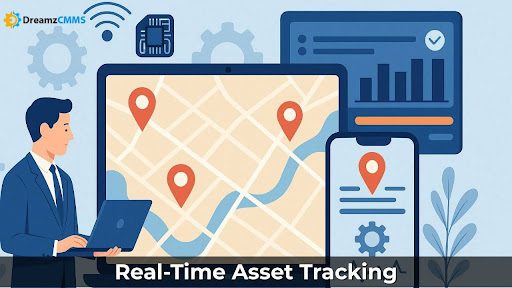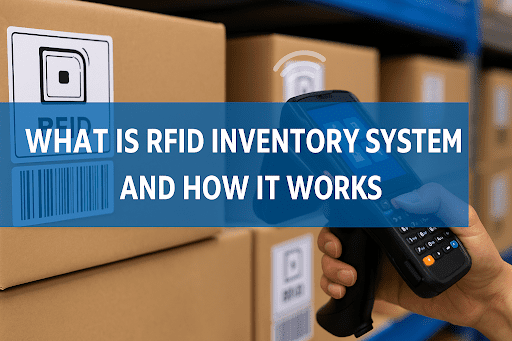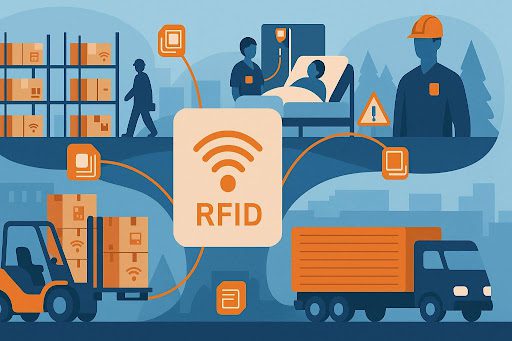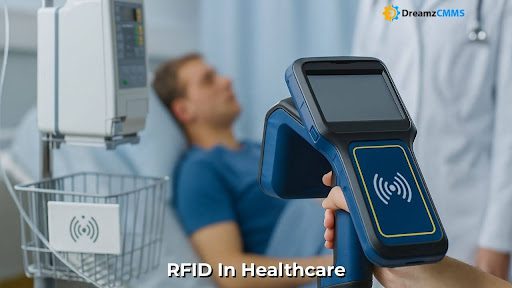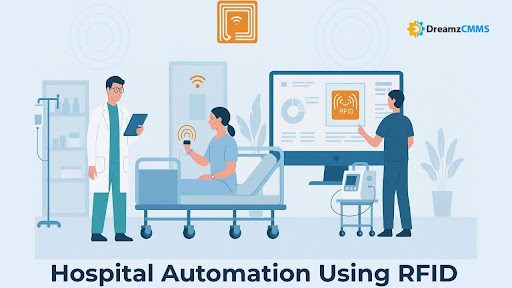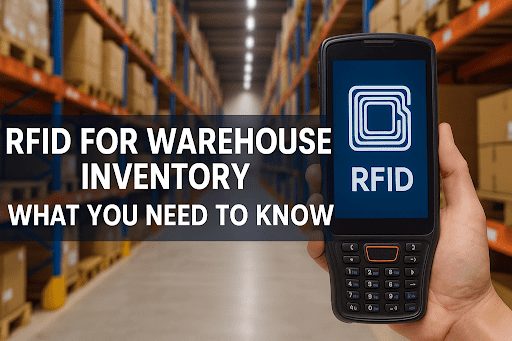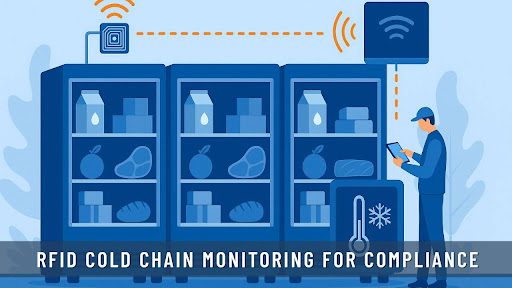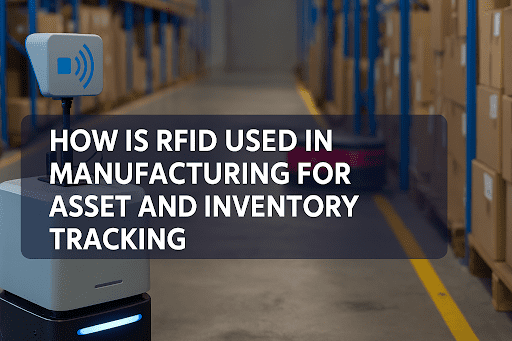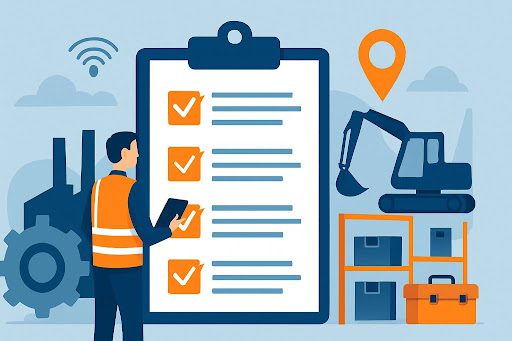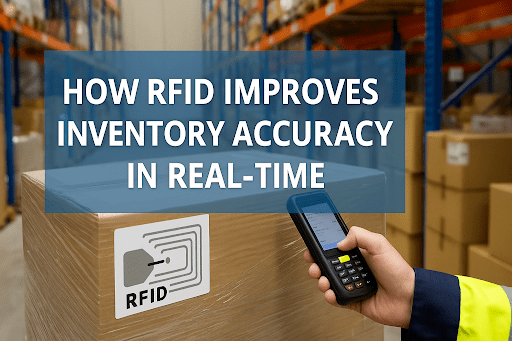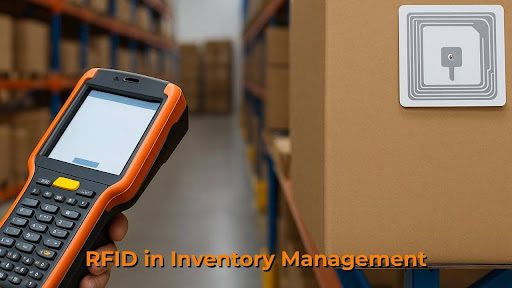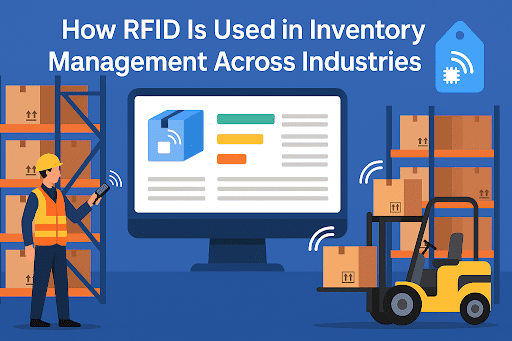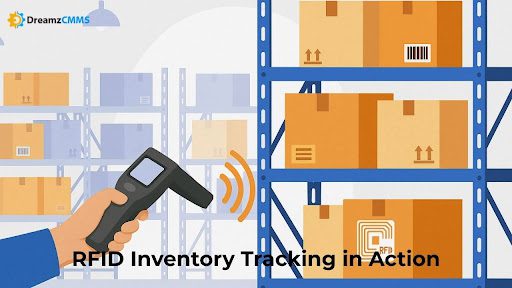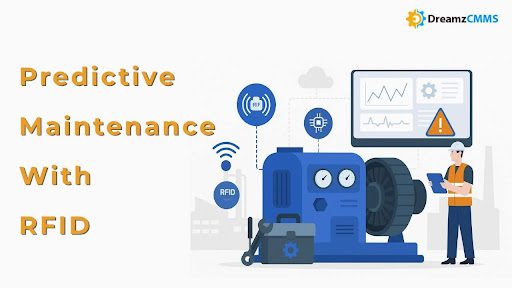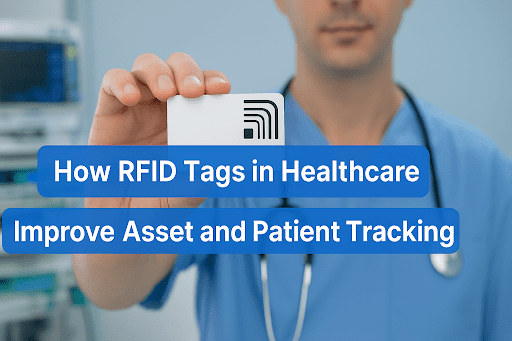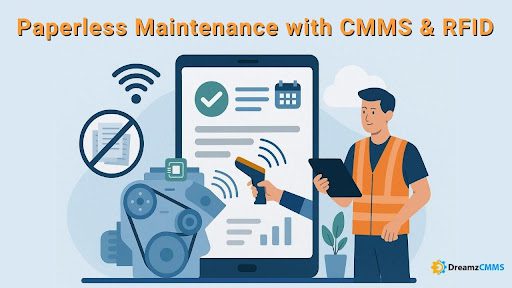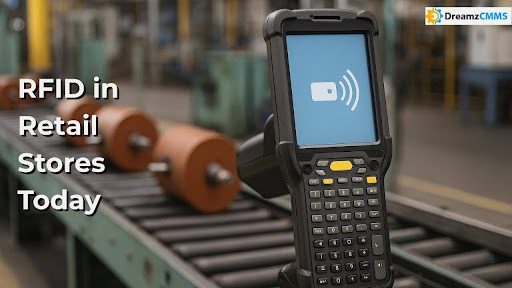 BACK TO Blog
BACK TO Blog
Asset Rental Management
RFID Asset Tracking
Businesses must have precise Asset Tracking Accuracy to achieve better decision-making and maintain proper maintenance scheduling while minimizing operational risks within the modern data-driven maintenance and operations environment. The lack of correct and current asset data in organizations causes problems that result in lost equipment locations and delayed maintenance and higher operational expenses. RFID Asset Tracking Software linked with a CMMS system provides organizations a
- July 30, 2025
- DreamzCMMS Team
- 13 minutes read
- July 30, 2025
- DreamzCMMS Team
- 13 minutes read
Businesses must have precise Asset Tracking Accuracy to achieve better decision-making and maintain proper maintenance scheduling while minimizing operational risks within the modern data-driven maintenance and operations environment. The lack of correct and current asset data in organizations causes problems that result in lost equipment locations and delayed maintenance and higher operational expenses.
RFID Asset Tracking Software linked with a CMMS system provides organizations a dependable solution to address these problems through its real-time asset tracking capabilities that enhance overall asset data precision. This guide examines how the combination of RFID-CMMS technology provides better asset tracking capabilities to prevent location errors and enhance operational visibility.
Advanced maintenance tools help organizations achieve better asset accuracy
The system provides powerful tools which enhance real-time visibility and data accuracy for asset tracking and maintenance operations. Automated tracking systems combined with scheduled maintenance enable your equipment to operate at its highest performance level.
Explore Asset Maintenance Management Software
Why Asset Tracking Accuracy Matters in Modern Operations
Organizations now view efficient asset management as a critical strategic element instead of an operational necessity. Organizations in all industries that include manufacturing plants and healthcare facilities and construction sites and field service operations must track their assets correctly to achieve higher productivity and better cost management and compliance. Asset Tracking Accuracy defines how organizations can properly use their equipment and maintain their assets and distribute their resources.
Consequences of Inaccurate Asset Tracking
- Operational delays occur because tools and equipment remain unlocated.
Employees waste valuable time searching for misplaced tools and machinery and spare parts due to inaccurate asset recording and lost assets. Small delays in construction and manufacturing operations result in extensive project delays and dissatisfied clients because of their cascading effect.
- Maintenance scheduling problems and equipment breakdowns occur because of errors in tracking.
The correct maintenance data enables teams to schedule preventive and predictive maintenance operations. Wrong tracking of asset locations and usage hours generates missed or delayed maintenance tasks. Unexpected equipment failures occur due to incorrect asset tracking which produces increased unplanned downtime that requires costly emergency repair services.
- The noncompliance of regulatory requirements results from incorrect audit trail entries.
Healthcare along with pharmaceuticals and cold chain logistics must comply with strict regulatory standards. The failure to properly maintain audit trails leads organizations to noncompliance which results in expensive penalties alongside negative reputation effects. The verification of accurate asset tracking systems provides an auditable history of asset maintenance and movement thus facilitating compliance inspections.
- Higher Operational Costs from Unnecessary Purchases
Organizations make incorrect assumptions about tool and equipment losses because their records contain inaccurate information. The belief that assets are missing leads organizations to purchase or rent equipment without necessity thus raising operational expenses while straining budget resources.
Accurate asset tracking produces improved business efficiency through its implementation
- Real-Time Asset Visibility
Managers who receive correct data instantly obtain information about available equipment and their current locations as well as their state of maintenance. The ability to make better decisions and respond quickly to vital operations arises from this scenario.
- Optimized Maintenance Scheduling
By using precise tracking systems organizations can schedule maintenance at optimal times based on asset usage and condition to lower equipment downtime and extend its useful life.
- Improved Inventory Management with RFID
When inventory tracking with RFID integrates with RFID asset tracking the system provides accurate data for both spare parts and consumable assets. Real-time tracking of assets helps organizations preserve correct inventory amounts to avoid both overstock and stockout situations.
- Enhanced Resource Utilization
Organizations that know the precise status of their equipment along with its current location can optimize their resource distribution better. The field service teams gain from this information by distributing suitable tools to proper jobs during appropriate times.
- Data-Driven Strategic Decisions
The accurate tracking system generates reliable historical data that organizations use for asset lifecycle analysis and cost-benefit assessments and strategic planning over the long term.
Cold chain logistics requires precise tracking to maintain product safety alongside regulatory compliance. The article demonstrates how RFID for cold chain applications supports product safety through real-time tracking systems.
The Role of RFID in Improving Asset Tracking Accuracy
Traditional asset tracking methods including barcodes, spreadsheets, and manual logs served for equipment movement and maintenance history records over an extended period. The methods show high susceptibility to human mistakes as well as delayed data updates and absent records. Industries have outgrown their complexity and become more asset-heavy so they require precise automatic real-time tracking systems as an essential requirement.
RFID technology enables digital asset monitoring and field-ready asset tracking which provides improved Asset Tracking Accuracy across multiple industries.
RFID offers better reliability than traditional tracking methods
- Eliminates Manual Entry Errors – The use of RFID tags eliminates manual entry errors since these tags automatically transmit data to readers without human intervention which minimizes the chances of mistakes.
- No Line-of-Sight Requirement – The RFID reader technology functions without the need for direct line of sight which allows it to detect multiple tags at once from various locations including inside containers and hard-to-reach areas thus making it optimal for industrial use.
- Real-Time Updates – The system provides real-time updates because continuous data transmission maintains real-time asset location and status information which proves essential for rapid operations including healthcare and field service maintenance.
- Scalable for Large Asset Volumes – RFID technology supports the tracking of massive asset numbers beyond what manual log systems and barcode systems can accomplish.
How RFID Works
- RFID Tags with Unique Identification Data
RFID tags applied to each asset contain their distinct identification data. The tags maintain vital information about asset identification alongside recorded maintenance activities and operational usage data.
- Passive RFID Asset Tagging
Industrial facilities together with warehouse spaces utilize passive RFID asset tagging methods. These tags work at a low cost without batteries and their signals reach readers from far distances so they serve well for big-scale asset tracking needs.
- Automatic Data Capture by RFID Readers
The strategic placement of RFID readers enables automatic detection of asset information which happens in real-time. The automated tracking process through RFID systems enhances speed and maintains precise asset location accuracy above manual scanning techniques.
- Real-Time System Updates
The data collection system sends information to a central database or CMMS which immediately updates the system with asset location information as well as condition and movement records.
RFID-CMMS Integration for Maximum Accuracy
The implementation of RFID-enabled maintenance systems together with CMMS provides advantages that surpass basic tracking functions:
- Maintenance Asset Visibility – Through real-time equipment status monitoring managers and technicians can access equipment availability and service history which leads to improved resource utilization.
- Precise Equipment History – Each asset receives automatic lifecycle history creation from the system which logs all movements and usage hours together with maintenance tasks.
- Improved Equipment Location Accuracy – The exact positioning data from RFID readers enables technicians to find equipment and tools promptly thus minimizing equipment downtime.
- Predictive Maintenance Support – RFID tags that work with IoT sensors enable asset condition monitoring to trigger automatic work orders in the CMMS for maintenance requirements.
Warehouse RFID systems installed in large warehouses function as essential assets to track spare parts and improve inventory management and asset data precision.
Why CMMS Is Essential for Accurate Asset Tracking
The central function of a CMMS (Computerized Maintenance Management System) ensures Asset Tracking Accuracy because it acts as the unified information center for all asset data. The system unifies asset information along with maintenance records and work requests and inventory control within a unified digital framework to provide full visibility to maintenance personnel and supervisors about asset life cycles.
RFID technology enables real-time automated data collection yet CMMS systems organize this information for analytical purposes and turn it into operational decisions. The combination of RFID asset tracking software with a CMMS enhances asset management processes by delivering improved accuracy and reliability and enhanced operational efficiency.
Key Advantages of Using CMMS for Accurate Asset Tracking
1. Automated Work Order Generation
The integration of RFID with a CMMS allows for automatic generation of work orders through its most valuable feature. RFID tags enable maintenance alerts through predefined thresholds which include usage hours and temperature levels and operating cycles.
- When an RFID tag detects unusual motor vibrations the CMMS automatically produces preventive maintenance work orders for timely equipment servicing before breakdowns occur.
- The automation system minimizes human oversight and guarantees that essential maintenance operations will always be executed.
2. Maintenance History Integration
Every detail about an asset's lifecycle gets stored in a CMMS database because RFID integration automatically documents every movement and usage log as well as maintenance activities.
- The system enables technicians to obtain immediate access to all historical data of an asset including service records and past repairs and component replacements.
- The analysis of historical data enables organizations to solve recurring problems while improving failure prediction and scheduling maintenance activities more efficiently.
Such detailed records also enhance maintenance asset visibility, giving managers clear insights into asset performance over time.
3. Enhanced Equipment Audits and Compliance
Healthcare alongside pharmaceuticals and manufacturing sectors follow stringent regulatory requirements. Equipment audits performed using RFID tags alongside CMMS create an auditable tracking system which ensures reliability.
- Each asset activity including movement and maintenance and inspection gets digitally logged with timestamps which decreases errors in audit documentation.
- The automated process ensures safety standards and quality protocols and regulatory compliance while minimizing audit costs through streamlined inspections.
The combination of CMMS with RFID systems enhances audit accuracy for high-value equipment and rental assets while minimizing risks from lost or misplaced tools.
4. Preventive Maintenance Optimization
The failure to observe scheduled service intervals in conventional maintenance methods causes unplanned breakdowns to occur. The combination of CMMS with RFID-powered real-time asset tracking enables proactive maintenance operations.
- The CMMS system receives real-time asset conditions including operating temperature and usage duration and equipment location data automatically.
- The system uses live data to modify maintenance schedules which decreases unexpected stoppages while prolonging equipment operating life.
The optimization process leads to better equipment location accuracy while maximizing resource effectiveness through technician dispatches that occur only when needed and reach the appropriate asset at the appropriate time.
The Combined Impact: RFID + CMMS
RFID generates precise real-time asset information which the CMMS system uses to develop operational efficiency. The systems work together to:
- Reduces tracking errors because of the absence of manual data entry.
- The system provides complete asset monitoring capabilities along with detailed analytical features.
- Organizations gain better decision-making capabilities because of the system's real-time and historical data analysis.
- The system helps organizations maintain compliance readiness through automatic and precise audit log generation.
Businesses can achieve field-ready asset tracking and better asset data accuracy when they use both systems for improved maintenance asset visibility.
Benefits of RFID-CMMS Integration for Asset Tracking Accuracy
The combination of RFID and CMMS provides a holistic approach to improving asset data accuracy. Below are key benefits:
1. Real-Time Asset Tracking
RFID readers maintain asset location updates in the CMMS system to provide precise asset location tracking. Equipment location becomes instant through this system which minimizes both search duration and operational delays.
2. Reduce Tracking Errors
Human error is a leading cause of asset mismanagement. The RFID-CMMS system automatically records every asset movement to reduce manual entry mistakes to a minimum.
3. Improved Inventory Tracking with RFID
The system provides digital asset monitoring for inventory items which enables maintenance managers to track spare parts levels and automate purchase orders while avoiding shortages.
4. Enhanced Maintenance Asset Visibility
The immediate access to maintenance asset visibility that technicians receive includes service history and upcoming maintenance schedules which helps them make better operational decisions.
5. Field-Ready Asset Tracking
Maintenance teams working in the field can benefit from asset tracking technology that enables them to update asset data anywhere they are for better operational response.
6. Accurate Equipment Audits
The RFID tag system creates an auditable tracking system which makes RFID for equipment audits a dependable solution for regulatory inspections.
Key Features of RFID-CMMS for Accurate Asset Tracking
When acquiring asset tracking technology it is essential to choose RFID-CMMS systems which incorporate these specific features:
1. Passive RFID Asset Tagging
- High-volume asset tracking benefits from this method because it remains affordable.
- The system provides accurate equipment location data through non-line-of-sight scanning operations.
2. Automated Digital Asset Monitoring
- The CMMS system updates assets automatically when movement occurs to minimize human intervention.
3. Mobile CMMS Integration
- Field teams can view live asset tracking data from mobile phones and tablets.
4. RFID-Enabled Maintenance System
- The system generates maintenance alerts through RFID scans which help improve predictive maintenance scheduling.
5. Analytics for Maintenance Asset Visibility
- The system provides detailed reports about asset utilization and movement trends and audit readiness information.
Enterprises interested in advanced data security should consider blockchain asset tracking because it provides tamper-proof data protection for compliance-sensitive industries when used with RFID-CMMS systems.
Use Cases of RFID-CMMS for Asset Tracking Accuracy
1. Manufacturing Plants
Manufacturers track their tools and equipment throughout various facilities through RFID Asset Tracking Software. The system enables precise tracking of assets and automatic work order creation for scheduled maintenance.
2. Healthcare Facilities
The healthcare industry relies on RFID-enabled maintenance systems to track their medical equipment. The system enables better asset tracking and data precision to stop essential equipment from disappearing.
3. Construction and Field Service
Construction teams can use field-ready asset tracking to locate machinery throughout extensive sites which enhances equipment location precision and minimizes project delays.
4. Warehousing and Inventory Management
The use of RFID for inventory tracking gives real-time spare parts availability data which helps organizations decrease both their surplus inventory and stockout rates.
5. Rental Asset Management
Companies that manage rental assets should integrate Asset Rental Management Software with RFID-CMMS to enhance their maintenance asset visibility and reduce asset misplacement which will boost their profitability.
Future of Asset Tracking Accuracy with RFID-CMMS
RFID-CMMS technology will advance to deliver enhanced precision alongside automated processes in the upcoming years :
- AI-Powered Predictive Tracking – Real-time asset tracking data analysis by Artificial Intelligence systems enables the prediction of equipment failures and automatic maintenance recommendations.
- IoT-Connected RFID Devices – The combination of IoT sensors and RFID technology will provide digital asset monitoring through temperature and vibration data and usage information.
- Augmented Reality (AR) Support – The future of asset tracking systems will be enhanced through AR-enabled CMMS which will assist technicians to instantly locate assets for better field-ready tracking.
- Blockchain for Secure Equipment Audits – The combination of RFID data with blockchain asset tracking technology provides tamper-proof RFID equipment audits which boosts compliance standards.
Conclusion
Organizations need to implement Asset Tracking Accuracy as a vital requirement because it helps them decrease operational costs and fulfill regulatory requirements while boosting maintenance efficiency. The combination of RFID Asset Tracking Software with a CMMS enables organizations to perform accurate real-time asset tracking and improve both asset data accuracy and maintenance asset visibility.
RFID-enabled maintenance systems help organizations minimize tracking mistakes while enhancing equipment site identification and RFID-based inventory control systems to boost operational productivity. Investigate advanced Asset Rental Management Software which supports RFID-CMMS integration to achieve maximum efficiency and accuracy for your asset management strategy optimization.
Your asset management needs a transformation
DreamzCMMS enables you to advance your maintenance operations and asset tracking capabilities. The combination of RFID-CMMS technology enables organizations to achieve better accuracy while decreasing downtime and improving operational efficiency.
Ready for More?
Talk to one of our CMMS experts and see how DreamzCMMS can simplify your maintenance operations.
Book a free consultation
